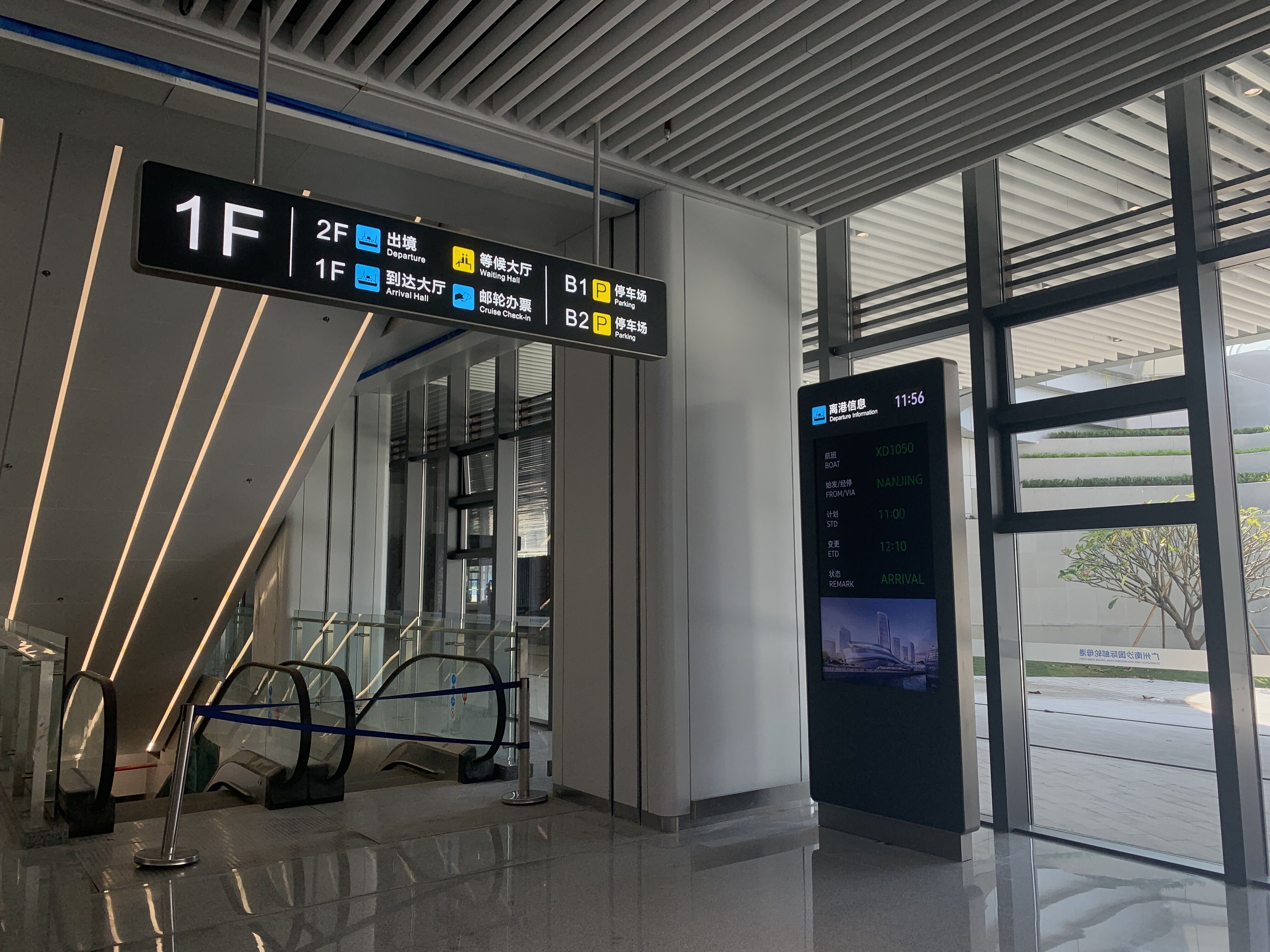Trong môi trường kinh doanh cạnh tranh và không ngừng thay đổi ngày nay, các doanh nghiệp luôn tìm kiếm những chiến lược sáng tạo và thực tiễn nhằm nâng cao chất lượng không gian làm việc và cải thiện trải nghiệm khách hàng. Trong số nhiều yếu tố góp phần vào mục tiêu này, biển báo nội thất nổi lên như một viên ngọc ẩn giấu với tiềm năng mang lại những chuyển biến đáng kể. Thường bị đánh giá thấp, biển báo nội thất lại chính là chìa khóa để định hình bầu không khí của doanh nghiệp, củng cố nhận diện thương hiệu, hướng dẫn khách hàng hiệu quả và xây dựng một môi trường văn phòng nhất quán, cuốn hút. Trong phần trình bày dưới đây, chúng ta sẽ khám phá những cách đa dạng mà những tấm biển trong nhà được thiết kế công phu có thể định hình lại diện mạo hoạt động của doanh nghiệp.
Vai Trò Cơ Bản Của Biển Báo Nội Thất Trong Doanh Nghiệp
Biển hiệu nội thất đóng vai trò là nền tảng trong chiến lược thương hiệu của doanh nghiệp, hoạt động như một đại sứ thầm lặng truyền tải bản chất, giá trị và sứ mệnh của thương hiệu. Vượt xa chức năng chỉ dẫn định hướng đơn thuần, những tấm biển này chính là công cụ kể chuyện mạnh mẽ. Hãy tưởng tượng một công ty luật cao cấp với các biển hiệu nội thất thiết kế tối giản, hiện đại sử dụng phông chữ tinh tế cùng bảng màu đơn sắc. Những biển hiệu như vậy toát lên sự chuyên nghiệp, chính xác và chu đáo, ngay lập tức cho thấy với khách hàng rằng công ty là một nhà cung cấp dịch vụ đáng tin cậy và tinh tế. Ngược lại, một công ty khởi nghiệp sáng tạo có thể lựa chọn những biển hiệu sặc sỡ, vui mắt với hình ảnh sinh động và gam màu nổi bật, phản ánh tinh thần đổi mới và văn hóa năng động của doanh nghiệp.
Khi các doanh nghiệp đầu tư vào thiết kế chiến lược và thông điệp có ý nghĩa cho biển hiệu nội thất của họ, họ tạo ra một câu chuyện thương hiệu nhất quán lan tỏa đến từng ngóc ngách của không gian làm việc. Việc lặp lại câu chuyện thương hiệu này không chỉ giúp khách tham quan hình thành ấn tượng tích cực ban đầu mà còn khắc sâu hình ảnh thương hiệu trong trí nhớ của họ lâu dài sau khi rời đi. Ví dụ, một quán cà phê với những tấm biển hiệu thể hiện quy trình rang độc đáo và cam kết tìm nguồn cung ứng hạt cà phê bền vững có thể xây dựng kết nối cảm xúc với khách hàng, biến một lần mua cà phê đơn thuần thành một trải nghiệm thương hiệu đáng nhớ.
Định Hướng Khách Hàng Chính Xác
Một trong những chức năng chính của biển hiệu nội thất là đóng vai trò định hướng đáng tin cậy cho người mua sắm và khách tham quan bên trong cửa hàng hoặc văn phòng. Tại các trung tâm bán lẻ lớn hay tòa nhà văn phòng phức tạp, sự nhầm lẫn và mất phương hướng nhanh chóng có thể dẫn đến cảm giác bực tức ở khách hàng. Những tấm biển rõ ràng và được đặt một cách chiến lược sẽ loại bỏ sự đoán mò, đảm bảo trải nghiệm di chuyển liền mạch và không căng thẳng.
Những mũi tên định hướng, đi kèm với văn bản ngắn gọn và rõ ràng, đóng vai trò quan trọng trong việc dẫn đường cho khách hàng đến các điểm đến khác nhau như quầy dịch vụ, lối đi sản phẩm, nhà vệ sinh hoặc lối ra. Ví dụ, tại một cửa hàng bách hóa rộng lớn, những biển báo chỉ dẫn như "Đồ mặc nữ - Tầng 2" hay "Dịch vụ khách hàng - Rẽ phải tiếp theo" có thể giúp khách hàng tiết kiệm đáng kể thời gian và công sức. Những biển báo thông tin nhấn mạnh các dịch vụ đặc biệt, chương trình khuyến mãi hoặc ra mắt sản phẩm mới cũng có thể khơi gợi sự quan tâm của khách hàng và khuyến khích họ khám phá thêm. Khi luồng di chuyển của khách hàng được tối ưu hóa nhờ hệ thống biển báo hiệu quả, họ sẽ có xu hướng ở lại lâu hơn, tận hưởng trải nghiệm mua sắm hoặc tham quan và cuối cùng trở thành khách hàng quen thuộc.
Tạo dựng Không khí Phù hợp bằng Biển báo
Biển hiệu nội thất đóng vai trò quan trọng trong việc định hình không khí tổng thể của doanh nghiệp, tạo nên phong cách cho trải nghiệm khách hàng. Sự lựa chọn màu sắc, chất liệu và vị trí đặt biển hiệu có thể nhẹ nhàng nhưng mạnh mẽ ảnh hưởng đến cảm xúc và cách thức khách hàng tương tác trong không gian đó.
Trong một cửa hàng thời trang hiện đại, những màu sắc tươi sáng và nổi bật như hồng chói và xanh điện tử trên biển hiệu có thể mang lại năng lượng và sự hứng khởi, thu hút nhóm khách hàng trẻ yêu thích thời trang. Ngược lại, một spa cao cấp có thể sử dụng các tông màu dịu nhẹ như màu pastel hay màu sắc thiên nhiên trên biển hiệu, tạo ra môi trường yên bình và thư giãn, khuyến khích sự thả lỏng. Chất liệu biển hiệu cũng góp phần vào bầu không khí; biển gỗ có thể mang lại vẻ ấm cúng và cổ điển, trong khi biển kim loại truyền tải cảm giác hiện đại và tinh tế.
Khi các biển báo phù hợp một cách liền mạch với không khí mong muốn của doanh nghiệp, chúng sẽ tạo ra sự kết nối cảm xúc mạnh mẽ hơn giữa khách hàng và thương hiệu. Ví dụ, một hiệu sách ấm cúng với những biển hiệu bằng gỗ được vẽ tay mang lại cảm giác hoài niệm có thể khiến khách hàng cảm thấy như đang ở nhà, khuyến khích họ dừng lại lâu hơn bên những cuốn sách và tương tác sâu sắc hơn với các dịch vụ của cửa hàng.
Thúc đẩy An toàn và Tuân thủ
Biển báo nội thất vượt ra ngoài yếu tố thẩm mỹ và định hướng di chuyển; đây còn là thành phần quan trọng để đảm bảo môi trường kinh doanh an toàn và tuân thủ quy định. Trong bất kỳ công trình nào, những biển báo rõ ràng và dễ nhìn chỉ lối thoát hiểm, vị trí bình chữa cháy, trạm y tế sơ cứu và các thiết bị an toàn khác là yếu tố thiết yếu đảm bảo sức khỏe và an toàn cho nhân viên cũng như khách tham quan.
Trong trường hợp khẩn cấp như hỏa hoạn hoặc sự cố y tế, những biển báo an toàn được đặt đúng chỗ có thể hướng dẫn mọi người đến nơi an toàn một cách nhanh chóng và hiệu quả. Các biển báo hiển thị hướng dẫn an toàn như "Thoát hiểm qua cầu thang bộ" hay "Trường hợp xảy ra cháy, hãy bấm chuông báo" có thể ngăn chặn tình trạng hoảng loạn và đảm bảo mọi người đều biết phải làm gì. Ngoài ra, các biển báo truyền đạt quy định về sức khỏe và an toàn, ví dụ như yêu cầu đeo khẩu trang hoặc biện pháp giữ khoảng cách an toàn, đóng vai trò quan trọng trong việc duy trì một môi trường lành mạnh và tuân thủ quy định.
Bằng cách chú trọng vào hệ thống biển báo an toàn, doanh nghiệp không chỉ đáp ứng các yêu cầu pháp lý mà còn thể hiện cam kết với phúc lợi của các bên liên quan. Điều này có thể nâng cao danh tiếng công ty, xây dựng niềm tin với khách hàng và nhân viên, đồng thời đóng góp vào hình ảnh thương hiệu tích cực.
Các Xu Hướng Phát Triển Trong Biển Báo Nội Bộ
Khi cảnh quan kinh doanh và sở thích của người tiêu dùng tiếp tục thay đổi, các xu hướng trong biển hiệu nội thất cũng vậy. Trong những năm gần đây, biển hiệu kỹ thuật số đã ngày càng phổ biến nhờ tính linh hoạt và đặc tính động của nó. Các màn hình kỹ thuật số có thể hiển thị nhiều loại nội dung, từ quảng bá sản phẩm bắt mắt, cập nhật thời gian thực đến video hấp dẫn và thông tin tương tác. Chỉ với vài cú nhấp chuột, các doanh nghiệp có thể cập nhật thông điệp của mình, đảm bảo rằng biển hiệu luôn phù hợp và thu hút.
Đồng thời, hiện nay có sự tập trung ngày càng cao vào tính bền vững trong biển hiệu nội thất. Nhiều công ty đang lựa chọn các vật liệu thân thiện với môi trường như nhựa tái chế, tre và gỗ tái sử dụng để giảm tác động môi trường và thể hiện giá trị xanh của họ. Những biển hiệu bền vững này không chỉ đóng góp vào mô hình kinh doanh bền vững mà còn tạo được sự đồng cảm với những người tiêu dùng có ý thức về môi trường.
Một xu hướng nổi bật khác là việc tích hợp công nghệ như mã QR và thực tế tăng cường (AR) vào biển hiệu nội thất. Mã QR trên biển hiệu có thể dẫn khách hàng đến các thông tin bổ sung, ưu đãi độc quyền hoặc đánh giá trực tuyến, tạo ra sự kết hợp liền mạch giữa thế giới vật lý và kỹ thuật số. Các biển hiệu được hỗ trợ AR có thể mang lại trải nghiệm tương tác và sống động, cho phép khách hàng hình dung sản phẩm trong nhà của họ hoặc tìm hiểu thêm về thương hiệu theo cách vui vẻ và hấp dẫn.
Tóm lại, biển hiệu nội thất là một công cụ mạnh mẽ và linh hoạt có thể tạo ra tác động sâu rộng đến môi trường kinh doanh. Từ việc củng cố bản sắc thương hiệu và định hướng khách hàng đến việc tạo ra không khí phù hợp, thúc đẩy an toàn và đi đầu xu hướng, những biển báo trong nhà được thiết kế tốt có thể biến một không gian làm việc đơn điệu thành một môi trường sôi động, thu hút và lấy khách hàng làm trung tâm. Bằng cách đầu tư vào các biển hiệu nội thất chất lượng cao, các doanh nghiệp không chỉ đang trang trí không gian của họ; mà còn đưa ra một quyết định chiến lược có thể nâng cao sự hài lòng của khách hàng, thúc đẩy tăng trưởng kinh doanh và để lại ấn tượng lâu dài đối với tất cả những người bước vào.

